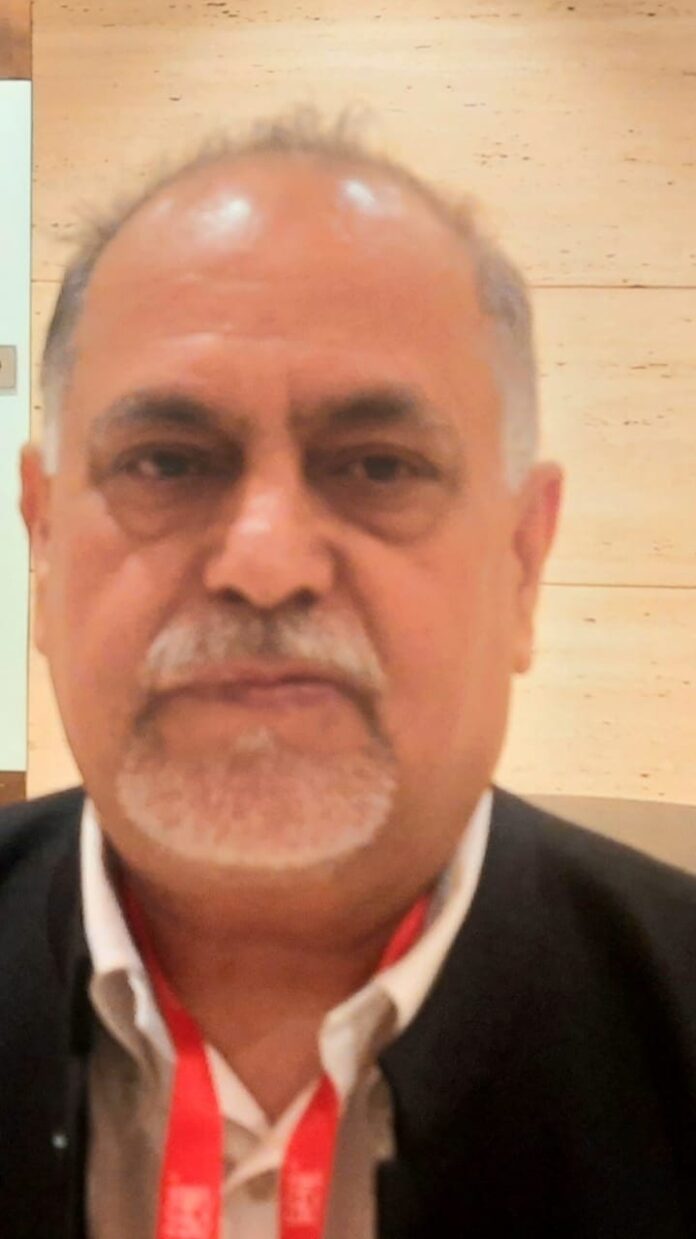Dr. Ramesh Kr. Mehta stands as a formidable figure in the realm of Intellectual Property Rights (IPR), boasting a distinguished career spanning over three decades. As the visionary founder of Mehta & Mehta Associates in 2005, he has been a beacon of excellence, reshaping the landscape of intellectual property consultancy.
Dr. Mehta’s illustrious journey commenced with pivotal roles at esteemed institutions such as Remfry & Sagar, FITT – IITD, DRDO, and IPO. His expertise is further underscored by his invaluable contributions as a nominated Expert Member of various prestigious committees, including the Patents Committee of the Department of Biotechnology, Ministry of Science & Technology, and the IP Syllabus & Copyright Committees of MHRD, Government of India.
A stalwart member of the Bar Council of Delhi/India, INTA, AIPPI, and GIPC, Dr. Mehta’s credentials as a registered Indian Patent & Design Agent, and Trade Mark Attorney attest to his unparalleled proficiency in the domain. His influence extends beyond borders, having served as a visiting faculty at NIIPM, Nagpur, where he played a pivotal role in training Examiners of Patents. He is also an Honorary Professor of IPR & Technology Transfer at the Kurukshetra University, Kurukshetra.
With an impressive track record encompassing a myriad of IPR matters and research endeavors, Dr. Mehta has earned widespread acclaim for his adept handling of patent, design, trademark, and copyright issues. His areas of expertise span the entire spectrum, from drafting and prosecuting to litigating complex cases across diverse high-technology fields.
Dr. Mehta’s remarkable achievements include spearheading intellectual property initiatives for luminaries like Hon’ble Dr. A.P.J. Abdul Kalam, the former President of India, during his tenure as Director General of DRDO. His scientific and technical prowess in dental implantology earned him accolades directly from Dr. Kalam himself.
Acknowledged with numerous prestigious awards, including the WIPO Fellowship, DRDO Technology Award, and DRDO Special Recognition Award, Dr. Mehta’s contributions have been globally recognized by institutions such as ACQ Global, M&A Today Global, and CorporateINTL Global. His stature in the legal fraternity is further underscored by commendations from renowned publications like Legal500, AsiaIP, IAM (IAM 300 and IAM 1000), and several others.
Beyond his legal acumen, Dr. Mehta is a prolific researcher, having made significant strides in diverse scientific disciplines ranging from biomedical devices to fuel technology. His inventive spirit is evidenced by 10 patented inventions and 48 design registrations, a testament to his unwavering commitment to innovation and advancement.
In an insightful conversation with The Interview World on the sidelines of Bharat Intellectual Property Yatra 2023-24, Dr. Ramesh Kr. Mehta delves into the intricacies of the patent process, the nuances of patent filing in India, essential factors for innovators to ponder before patent submission, and strategies for managing minor adjustments within a patent. Here, we present the salient points distilled from his interview.
Q: What are the distinguishing factors between patents granted for products and those granted for services?
A: Patents are crucial for safeguarding tangible inventions like machines, devices, or pharmaceuticals. They grant inventors exclusive rights to utilize, produce, and sell their creations. These patents cover various aspects including product design, composition, and manufacturing processes.
In contrast, patents for services protect intangible innovations such as methods, processes, or software solutions. They offer exclusive rights to their creators for the same duration. Service patents focus on novel techniques or systems that provide unique solutions to problems or streamline tasks.
Specifically, patents for artificial intelligence, software, and similar innovations fall under services. As an examiner of patents and designs from 1983 to 1985, I had the privilege of granting approximately 18 patents during that time.
Q: What are the comparative dynamics of Indian filing behaviors in the current decade versus previous decades?
A: The increase has been exponential, without a doubt. However, we must determine if this surge is linked to the government’s reduction in official fees for academic institutes. This aspect warrants further investigation. Previously, Indian filings constituted approximately 3% of the total. Now, they represent over 50%.
Moving forward, it’s imperative to assess whether these applications are being granted. This is crucial because many individuals file simply to capitalize on government incentives, such as research grants and promotions. However, they often fail to follow through with the examination and granting process; they file and then forget.
After 18 months, applications are published and enter the public domain. Such a passive approach to patenting shouldn’t be encouraged. Instead, we should focus on creating commercially viable patent portfolios that secure grants and can be leveraged within the industry, even if not immediately, then at a later stage.
Q: What key considerations should innovators prioritize before filing a patent, and what advice do you have for them in navigating the patent process effectively?
A: Before filing a patent, it’s essential to adopt a problem-solution approach. This entails identifying the problem you’re addressing, why you’re addressing it, and the difficulties encountered. These aspects must be clearly documented.
Consider why you’re working on the problem and the challenges you’ve faced in tackling it. Then, outline how you’ve resolved these issues. This threefold approach—problem identification, purpose of work, and resolution of difficulties—is crucial.
This methodology, known as the problem-solution approach, is integral to both Indian and European patent laws, and it’s widely accepted globally.
Understanding this approach can streamline the patent application process for innovators. In India, for instance, there were over 90,000 patent applications filed last year, with a target to surpass 100,000 this year.
Embracing a problem-solution approach can significantly enhance the chances of patent approval. Failures in research can actually contribute positively to your application. These failures become part of your background, allowing you to showcase the novelty and inventive step of your solution.
By documenting failures alongside successes, researchers can demonstrate their innovation’s superiority over existing solutions. This approach is crucial for establishing the uniqueness of your invention, even when working on minor differentiations or improvements in existing processes or designs.
Q: What are the implications and ethical considerations if an innovator files a patent by making minor alterations to an already filed patent by another innovator?
A: They possess the capability to generate an additional patent on your behalf, facilitating the process of patent acquisition. Even the most minimal adjustment, as slight as 0.1%, holds the potential to warrant the creation of a new patent. However, the pivotal factor lies in your capacity to effectively illustrate the benefits stemming from such a minor alteration. It’s imperative to not only demonstrate but also establish and articulate to the examiner the unique advantages resulting from this minute modification.
This process entails showcasing what is commonly termed as a ‘surprising effect’ or ‘technical advantage.’ Legally, these are recognized as technical advantages or surprising effects within the patent realm. By adeptly showcasing this aspect, you significantly enhance the likelihood of successfully filing and ultimately obtaining a new patent for each innovative step taken. This underscores the importance of thorough and compelling presentation, as it directly correlates with the issuance of patents for novel inventions.



